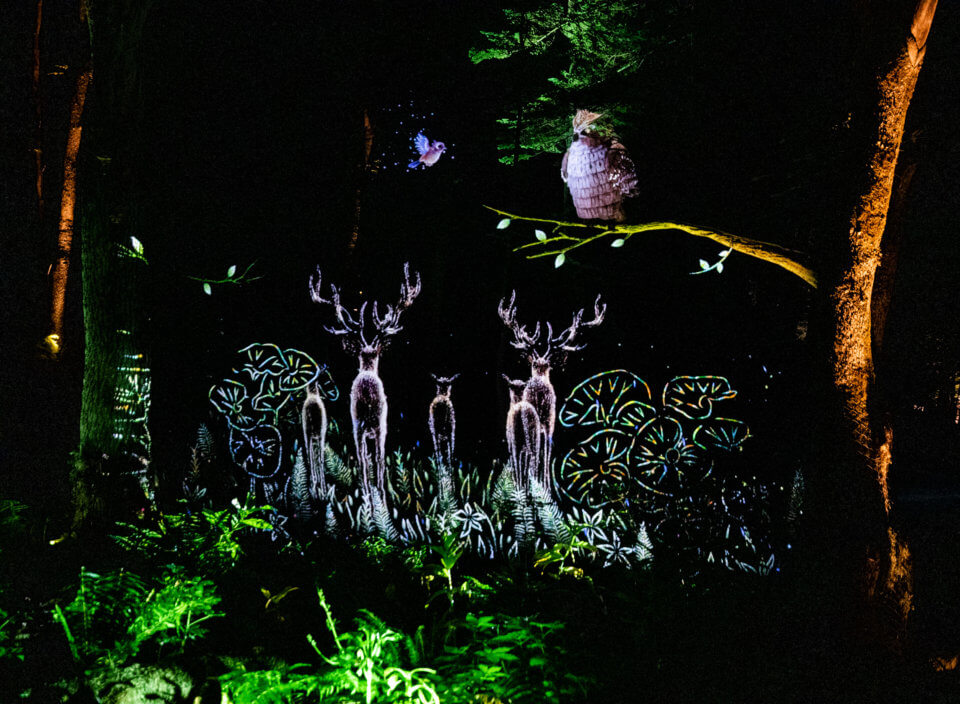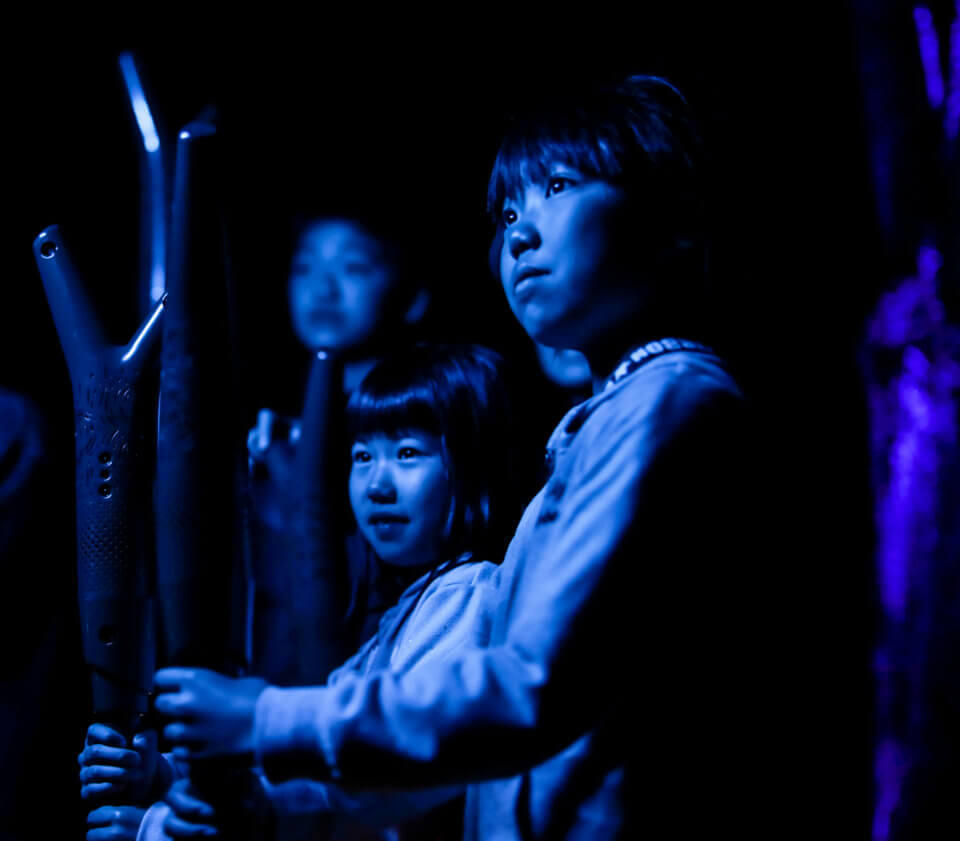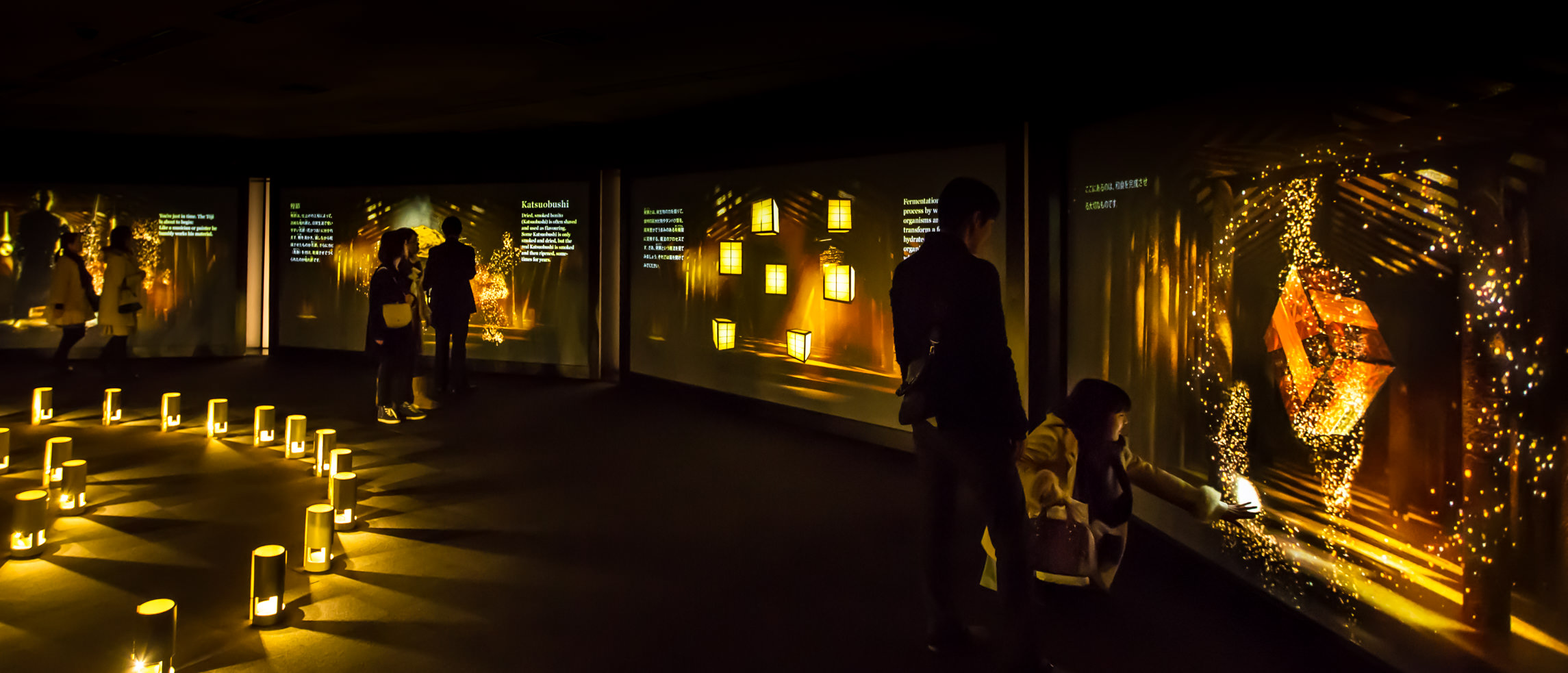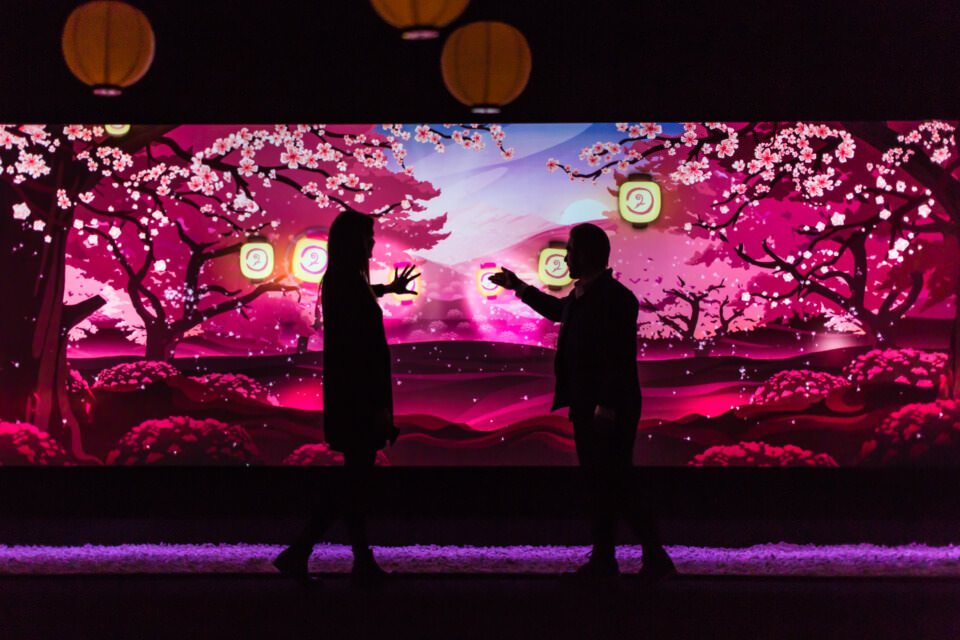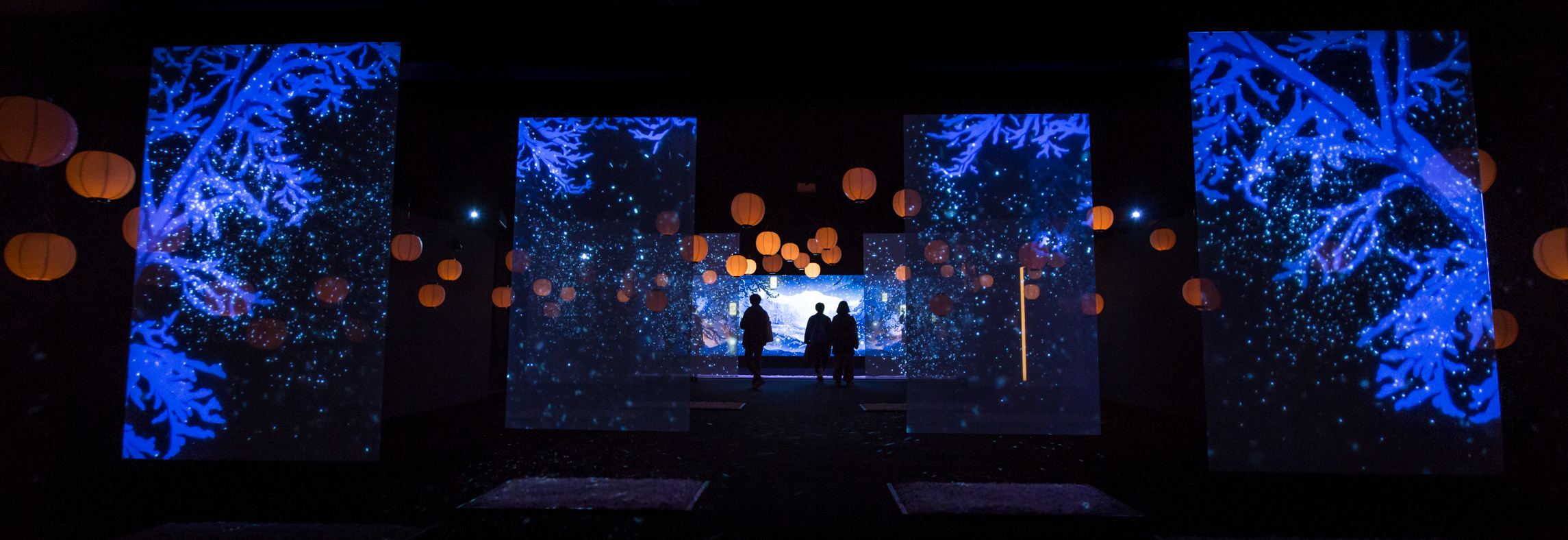IMAGINING THE FUTURE OF CULTURAL AND EDUCATIONAL EXPERIENCES

As cultural institutions shift from holding exhibits to hosting experiences, they highlight the demand for imagination and innovation. Visitors are increasingly in search of transformative, immersive experiences, and they bring high-tech expectations with them to centuries-old establishments. These challenges have driven museums, science centres, and other cultural attractions to ask: How can experiences be reimagined to engage visitors beyond the traditional kiosk exhibit model?
Reinvention begins with the visitor
People go to museums to discover new ideas—but they’re also looking for new ways to discover ideas. They want to be more actively involved in the knowledge-sharing process. “Our audience is constantly evolving, in their expectations around museum experiences, and in their scientific understanding,” says Tim Porter, Boston’s Museum of Science Director of Exhibit Content & Project Management. “It is critical that we evolve along with them, and provide our audience with current science, bolstered by the kinds of unforgettable experiences and engaging technologies that will help inspire a lifelong love of science in everyone.”
This ambition inspired The Museum, alongside Moment Factory, to push the boundaries of experiential learning with its upcoming permanent exhibit, Arctic Adventure: Exploring with Technology (slated to open Fall 2020). As visitors enter from the Blue Wing, they are not simply told about the Arctic—they step into a believable and immersive polar frontier. The Arctic comes to life with generative real-time content fine-tuned to change everything from sunlight hues and animal behaviour to the hour and season. Visitors become polar explorers who can trek across virtual ice fields with ground-penetrating radar and search for wildlife with interactive tools.
The exhibit’s engaging experiences invite visitors to be active participants, rather than passive observers. With more opportunities for involvement, guests are able to connect with the environment and technology in a more meaningful way. As Confucius reputedly said: “Tell me, and I will forget. Show me, and I may remember. Involve me, and I will understand.”
Engaging emotions through storytelling
At Moment Factory, we use storytelling and interactivity to touch visitors on an emotional level. Stories allow us to express universal themes in a more personal way. With narrative-driven experiences, people get to hear, see and feel as others do, which we believe is the most powerful way to understand one another.
We craft visitor journeys much like a script for a film or the structure of a novel. For each project, we develop a narrative arc and emotional curve that takes guests through moments of anticipation, wonder, learning, contemplation, and imagination. This lets us pace the experience and sustain curiosity between moments of play and internal reflection.
Visitors play a leading role in Kamuy Lumina, An Enchanted Night Walk At Lake Akan, an experience inspired by the storytelling traditions of the indigenous Ainu community in Hokkaido, Japan. The journey through Akan Mashu National Park centres on a retelling of the Ainu legend “Owl & Jaybird.” This hands-on narrative lets guests see, hear, and feel Ainu culture and attain a stronger appreciation for their reverence of the natural world.
Placing multimedia at the service of experiential learning
As the industry shifts toward more immersive programmes, technology should not be the goal in and of itself. Rather, multimedia should always be placed at the service of the message and cultural institutions’ missions to inspire and share knowledge. We use immersive design to hook people in, spark their curiosity, and sustain their interest so they can dive deeper and learn more.
With multimedia, sometimes that means less is more. At Kamuy Lumina, the woods spring to life with video projections and reverberate with special light and sound effects. But they also grow still so visitors can pause and reflect on ancient Ainu wisdom. To strike the right balance, Moment Factory worked in close collaboration with the Ainu community of Lake Akan, the Ministry of Environment and Akan Adventure Tourism Co. to seamlessly weave technology and storytelling together.
The foundation of any exhibit design is intricate interpretive planning. With this framework in place, multimedia can be seamlessly integrated to enrich experiences. At Tabegami Sama, guests were invited to explore Japan’s culinary traditions through four immersive installations. For the finale, projection mapping transformed a giant Chawan bowl of rice into a tactile rediscovery of the elemental ingredient and its landscape.
Multimedia can also be a useful tool to meet new challenges. In the era of physical distancing, technology can make hands-on exploration hands-free through motion sensors, touchless screens, floor projections, and apps. At the tour-de-force Jean Paul Gaultier exhibition, visitors needed only to step on a square to trigger projection onto a digital installation, becoming fully immersed in the designer’s world.
Creating deeper connections with augmented learning
Moment Factory’s R&D department is creating new tools and technologies for augmented learning, the next frontier of educational experiences. Just as augmented reality tools add layers of context and information to the real world, augmented learning technology fuses the digital and physical world together in mixed media environments that adapt to learners in real time. Augmented experiences transport visitors to responsive realms where they can test hypotheses and probe artefacts from every angle.
These tools make it possible for guests of all ages and backgrounds to participate in the learning process. “Augmented learning technology allows us to design intuitive experiences, tailored to the diverse interests and learning styles of all visitors,”says Nadia Lakhdari, Creative Director at Moment Factory. “We believe this will be a big part of reinventing the future of museums and cultural institutions.”

